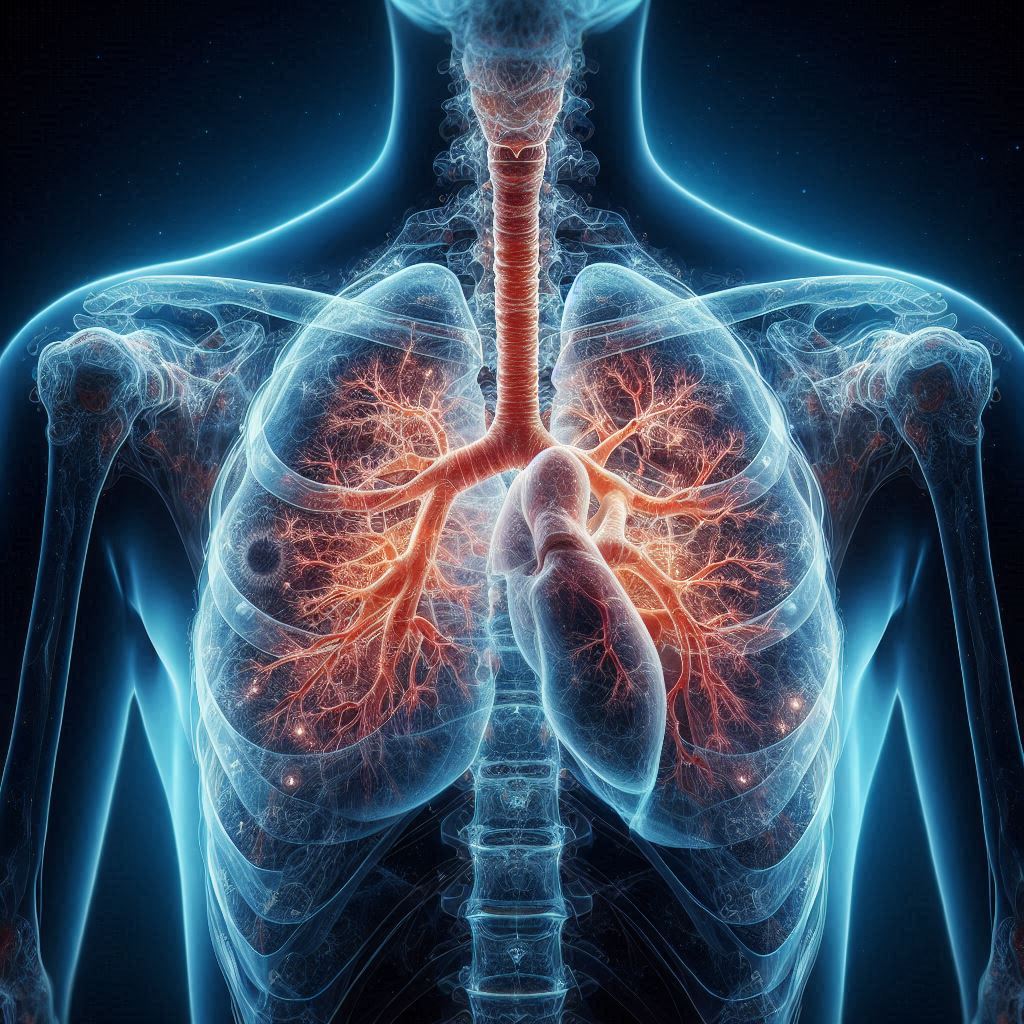
Sarcoidosis (also called sarcoid or Besnier-Boeck disease) is a disease due to inflammation. The disease can attack any organ of the body in any location. The disease most commonly involves granuloma formation in the lungs. Other commonly involved organ systems include the lymph nodes (especially the intrathoracic nodes); the skin; the eyes; the liver; the heart; and the nervous, musculoskeletal, renal, and endocrine systems. It is characterized by granulomas (small rounded outgrowths made up of blood vessels, cells and connective tissues) that can produce many different symptoms. It is generally a chronic disease, lasting for several years or a lifetime. These tiny granulomas can grow and clump together, making many large and small groups of lumps. If many granulomas form in an organ, they can affect how the organ works. The cause of sarcoidosis is unknown. Symptoms can occasionally appear suddenly but more often than not appear gradually. When viewing X-rays of the lungs, sarcoidosis can have the appearance of tuberculosis or lymphoma. In the majority of cases, these granulomas clear up, either with or without treatment.
Sarcoidosis almost always occurs in more than one organ at a time. There are a variety of granulomatous disorders that closely resemble sarcoidosis, including tuberculosis. Pulmonary sarcoidosis can cause loss of lung volume (the amount of air the lungs can hold) and abnormal lung stiffness. It is more commonly seen in people of African descent than Caucasians, primarily people of northern European descent in the latter case. It occurs throughout the world in any race. The close resemblence to tuberuculosis has led to speculation that sarcoidosis is due to an infectious organism. It is most common in adults between 20 and 40 years of age. Medications that increase the Th1 response, such as interferon, have been reported to trigger or exacerbate sarcoidosis. Recently, the gli -1 oncogene has been found to be highly expressed in persons with granulomatous skin diseases, including sarcoidosis. Granulomas can decrease in number if sarcoidosis is contained spontaneously or if it responds to treatment.
Causes of Sarcoidosis
The common causes and risk factor’s of Sarcoidosis include the following:
The exect cause of sarcoidosis is unknown.
A respiratory infection caused by a virus.
An unidentified toxic substance.
Environmental triggers.
An inherited or genetic factor.
Exposure to toxins or allergens.
Noninfectious agents, such as aluminum, zirconium, talc, pine tree pollen, and clay.
Symptoms of Sarcoidosis
Some sign and symptoms related to Sarcoidosis are as follows:
Shortness of breath.
Skin problems.
Fever.
Lung problems.
Mild chest pain.
Myositis.
Weight loss.
Small red bumps on your face, arms or buttocks, a condition more common in blacks than in whites.
Dry cough.
Night sweats.
Treatment of Sarcoidosis
Here is list of the methods for treating Sarcoidosis:
Sarcoidosis is usually treated with steroids initially.
Drugs called corticosteroids are the most common treatment used in fighting sarcoidosis.
Radiation has also been used to treat treatment-resistant cutaneous lesions.
Patients may be advised to follow a low-calcium diet, and to avoid sunlight and vitamin D supplements.
If prednisone fails to improve symptoms, other immune-modifying agents such as methotrexate, azathioprine, ciclosporin, hydroxychloroquine or chlorambucil may be used.
Antibiotic therapy has been reported to be effective for lung, lymph and cutaneous manifestations of sarcoidosis.
Eye and skin lesions may be managed with topical corticosteroids (eye drops, creams or injections). Laser surgery has been used in treating disfiguring skin plaques and lupus pernio.




